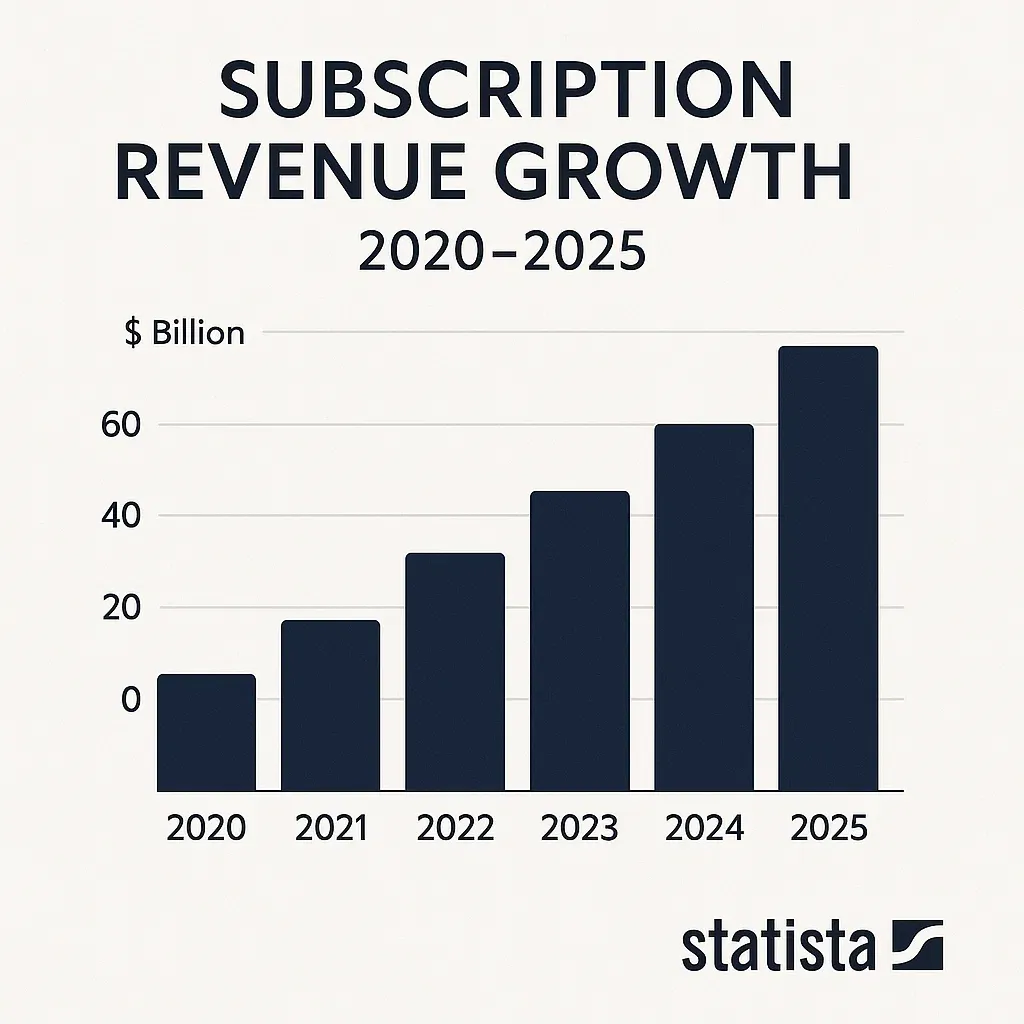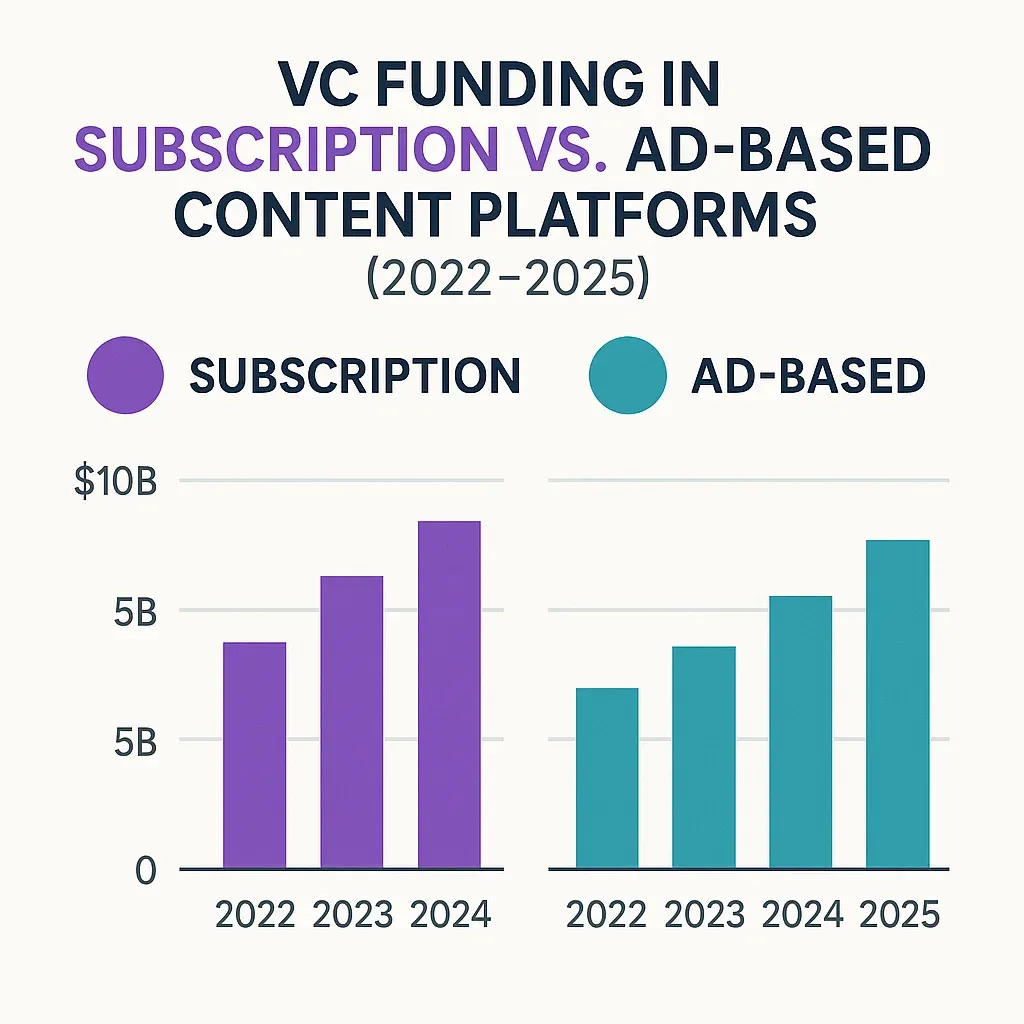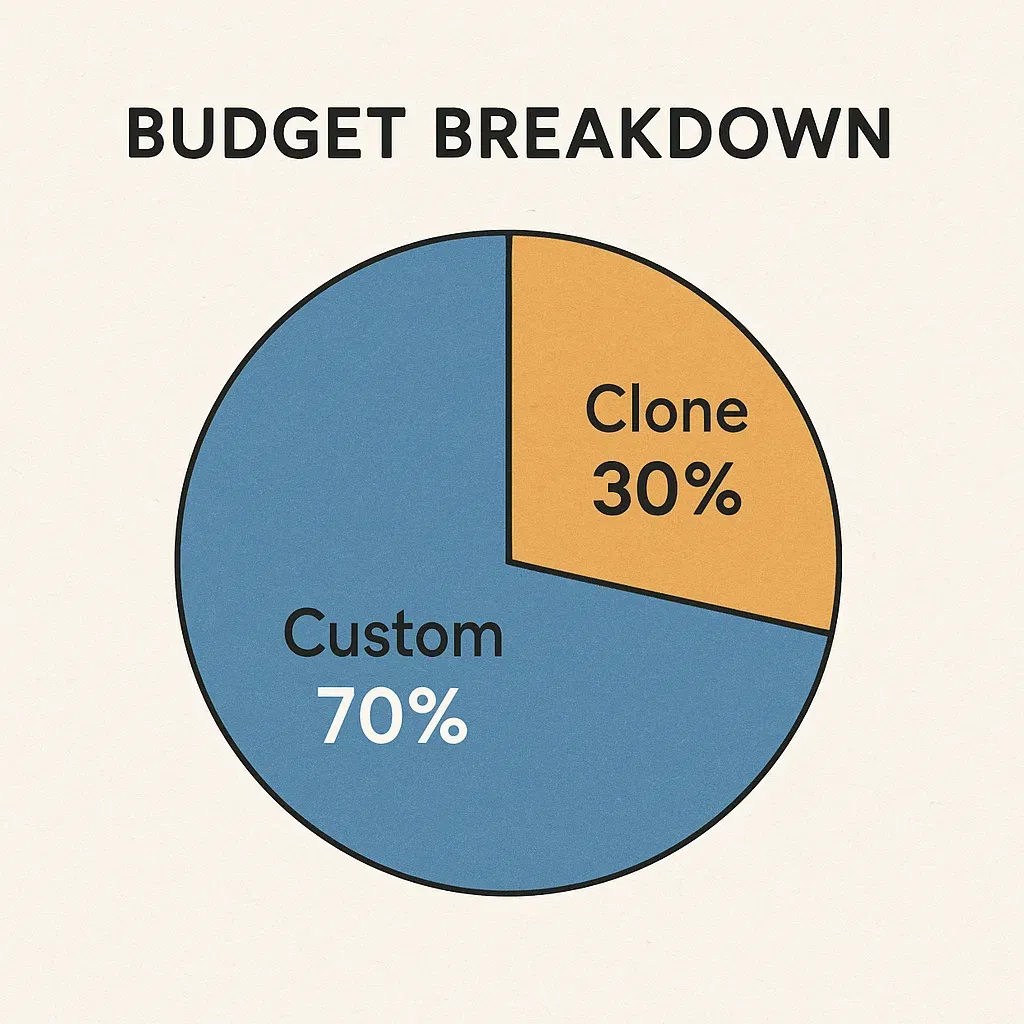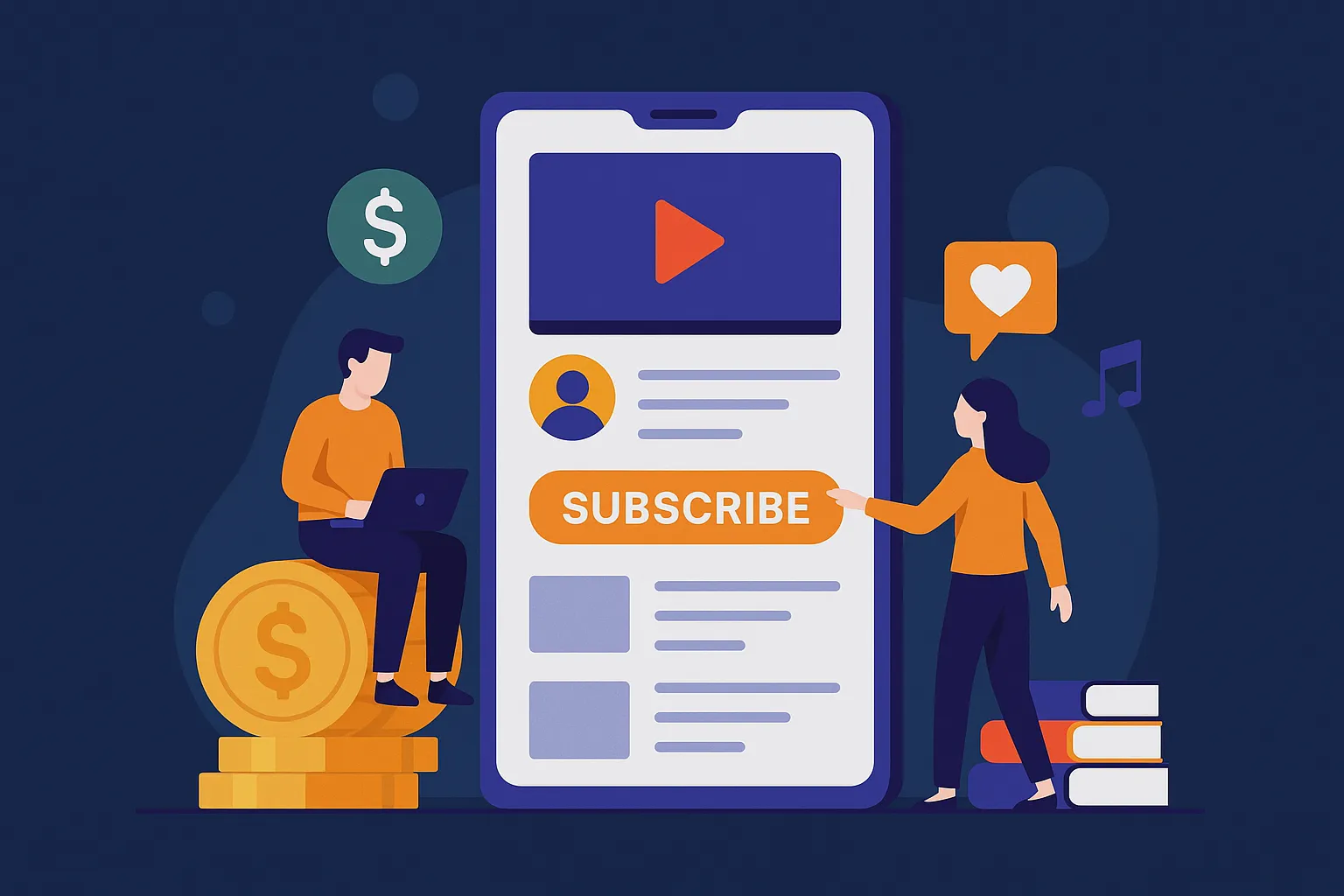As we step into 2025, the subscription-based content economy is flourishing like never before. With digital consumption at an all-time high and users increasingly willing to pay for personalized, exclusive, and ad-free experiences, subscription-based content platform apps have become one of the most lucrative app categories for tech-savvy entrepreneurs, digital agencies, and startup founders.
The global digital content market is projected to exceed $400 billion by 2027, driven by innovations in AI content delivery, rising internet penetration, and a growing creator economy. Whether it’s entertainment, education, wellness, or niche communities—users crave value, and they’re ready to subscribe for it.
In this blog post, we’ll break down why subscription-based content platform apps are booming in 2025, spotlight the most profitable startup ideas in this niche, explain what makes an app in this category truly successful, and show how using clone app development solutions like those from Miracuves can fast-track your launch and reduce risk.

Read more: How to Develop a Subscription Content Platform
Why Subscription-Based Content Platform Apps Are a Hot Opportunity in 2025
The global shift toward digital experiences is no longer a trend—it’s the new norm. Here’s why the subscription model is leading the charge:
1. Rising Consumer Spend on Digital Subscriptions
According to Statista, the average user in the U.S. now subscribes to over five different digital services, spending upwards of $90/month. Platforms that offer consistent value—be it streaming, educational content, or wellness—are capitalizing on this recurring revenue model.
2. Investor Interest and Startup Momentum
CB Insights reports that funding for content platforms using subscription models rose by 38% YoY in 2024, with early-stage startups receiving generous backing due to predictable revenue streams and high lifetime customer value.
3. Technology Is Fueling Innovation
AI, personalization engines, and low-code platforms are making it easier to deliver tailored content experiences at scale. This not only boosts retention but also reduces overhead.
4. Market Gaps Still Exist
While giants like Netflix and Spotify dominate entertainment, niche content categories—like mental wellness, skill-building, creator economy platforms—remain underexploited, offering huge potential for first movers.

Top Profitable Subscription-Based Content Platform App Ideas to Launch in 2025
1. Creator Economy Subscription Hub
Description: A platform where influencers, podcasters, and niche creators offer exclusive content to subscribers.
- Monetization Strategy: Monthly/annual plans, tips, pay-per-view content.
- Why It Works: Creator-audience relationships are more direct than ever. Patreon and OnlyFans proved it—many niches remain untapped.
2. Educational Microlearning App
Description: Bite-sized learning modules in niche fields like UX design, SaaS marketing, or ethical hacking.
- Monetization Strategy: Tiered subscriptions, certification access, business licensing.
- Why It Works: Professionals prefer micro-courses over lengthy MOOCs; retention is higher with gamified content.
3. Fitness and Mental Wellness Subscription App
Description: On-demand classes for yoga, guided meditations, breathwork, and mood journaling.
- Monetization Strategy: Subscription plans, upsell for 1:1 sessions or premium plans.
- Why It Works: Post-pandemic, self-care apps continue to see high engagement and low churn rates.
4. Exclusive News & Opinions Platform
Description: A platform delivering ad-free, expert-driven analysis in verticals like fintech, climate, or geopolitics.
- Monetization Strategy: Premium paywall, multi-device access, branded content for B2B.
- Why It Works: Trust in mainstream media is dropping; people want curated, independent insights.
5. Niche Hobbyist Content App
Description: Subscription-based content for enthusiasts—be it birdwatching, anime collecting, or vintage photography.
- Monetization Strategy: Monthly subscriptions, affiliate shops, exclusive event invites.
- Why It Works: Hyper-niche platforms enjoy loyal communities and strong retention.
6. Business Growth Content Platform
Description: Frameworks, playbooks, templates, and expert videos for startups and small businesses.
- Monetization Strategy: Freemium with upgrade tiers, team pricing, community access.
- Why It Works: Entrepreneurs love actionable tools and exclusive insider content.
7. Spirituality and Conscious Living App
Description: Daily mantras, astrology readings, affirmations, and sacred content libraries.
- Monetization Strategy: Subscriptions, in-app purchases, donation-based access.
- Why It Works: Digital spirituality is a growing global niche with high emotional investment.
What Makes an App Profitable in the Subscription-Based Content Niche?
Launching an app isn’t enough. Here’s what sets the profitable ones apart:
- Recurring Revenue: Predictable monthly income means better financial planning and VC appeal.
- High Retention: Content must evolve with the user’s journey. Apps with interactive content, gamification, or strong communities fare better.
- Low Overhead: No physical inventory, and with a solid CMS, you scale content without ballooning costs.
- User Acquisition Loops: Social sharing, referrals, and affiliate creators help keep CAC low.
Clone app development solutions, like those offered by Miracuves, provide entrepreneurs a pre-tested architecture that reduces initial dev costs by up to 60%, accelerates time-to-market, and eliminates months of prototyping guesswork.
Cost to Build a Subscription-Based Content Platform App in 2025
While the exact cost depends on features and tech stack, here’s a rough breakdown:
- Basic MVP: $12,000 – $20,000
- Mid-Level Platform: $25,000 – $45,000
- Advanced Platform (AI, video delivery, analytics): $50,000 – $100,000+
Launch Your Subscription-Based Content Platform App in Just 3–6 Days — Go Live with Miracuves from $2,500 to $3,000
Key cost drivers include:
- Content delivery system (video, text, audio)
- User roles and permissions
- Secure payment integrations
- Personalization and AI recommendations
- Cross-platform support (iOS, Android, Web)
With Miracuves’ white-label solutions, you can skip the costly ground-up development and start scaling with an already proven framework.

Read more: How Much Does It Cost to Develop a Subscription-Based Content Platform in 2025
Tips for Founders to Launch a Successful Subscription-Based Content App
Start with an MVP
Resist the urge to overbuild. Launch with core features, test engagement, then iterate based on real feedback.
Prioritize UI/UX
User flow and visual aesthetics are non-negotiable. If the app feels clunky, people won’t stick around—even for great content.
Validate Before You Build
Test landing pages, collect waitlist signups, run pre-launch ads. Data trumps assumptions.
Think Beyond Launch
Scalability, backend robustness, and long-term content planning matter more than short-term sizzle. Plan post-launch retention and marketing ahead of time.
Read more: How to Market a Subscription-Based Content Platform Successfully After Launch
Conclusion
The surge in digital consumption, coupled with a growing appetite for personalized experiences, makes subscription-based content platforms one of the most profitable app opportunities to launch in 2025. Whether you’re targeting creators, learners, wellness seekers, or niche hobbyists, the market is primed for innovation.
If you’re ready to capitalize on this momentum, don’t reinvent the wheel. Miracuves offers scalable, white-label clone solutions that let you go live faster, reduce development risk, and focus on what matters—building your audience and recurring revenue stream.
At Miracuves, we help innovators launch high-performance app clones that are fast, scalable, and monetization-ready. Ready to turn your idea into reality? Let’s build together.
FAQs
Q:1 How much does it cost to build a subscription-based content platform app?
The cost to build a subscription-based content platform app with Miracuves ranges from $2,500 to $3,000, with a complete Go-Live setup in just 3–6 days.
Q:2 What features should a successful subscription content app include?
User dashboard, personalized content feed, secure payment gateways, push notifications, and analytics.
Q:3 Is it better to build from scratch or use a clone solution?
For speed, cost efficiency, and market-proven architecture—clone solutions like Miracuves are smarter.
Q:4 How long does it take to launch a subscription content app?
With a clone, 3–6 weeks. From scratch? Expect 3–6 months minimum.
Q:5 Can I scale my app globally using a white-label clone?
Yes—Miracuves’ solutions are designed to scale with localization, multi-currency support, and GDPR compliance.
Q:6 What’s the best way to monetize my app long term?
Tiered subscriptions, upsells, content bundles, and affiliate programs drive long-term profitability
Related Articles:








